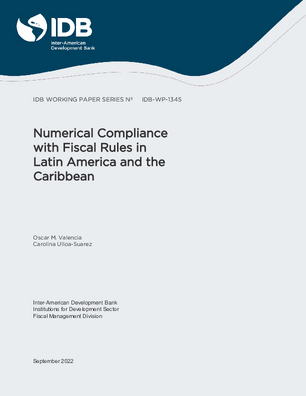Numerical Compliance with Fiscal Rules in Latin America and the Caribbean
Date
Sep 2022
This paper introduces a dataset that gathers information on whether and how Latin America and the Caribbean (LAC) have complied with or deviated from implemented fiscal rules. It provides annual data on fiscal rules for 14 LAC countries from 2000 to 2020, and it considers the design features of the rules and information about numerical compliance. It provides descriptive statistics reflecting the panorama of the fiscal rules implemented in LAC countries. Additionally, it calculates compliance rates across countries, years, and rules. On average, this study finds that compliance with rules aiming to constrain debt ratios and structural balances is the highest, while compliance with fiscal balance and expenditure rules is the lowest. Furthermore, the data collection process revealed that LAC countries still have room for discretion even when they subject their fiscal policy to rules. To address this problem, the paper proposes an adjusted compliance index that considers different elements that add degrees of discretion to the rule. The study finds that the numerical compliance rates of each country are likely to be over-estimated once discretionary actions are accounted for.




